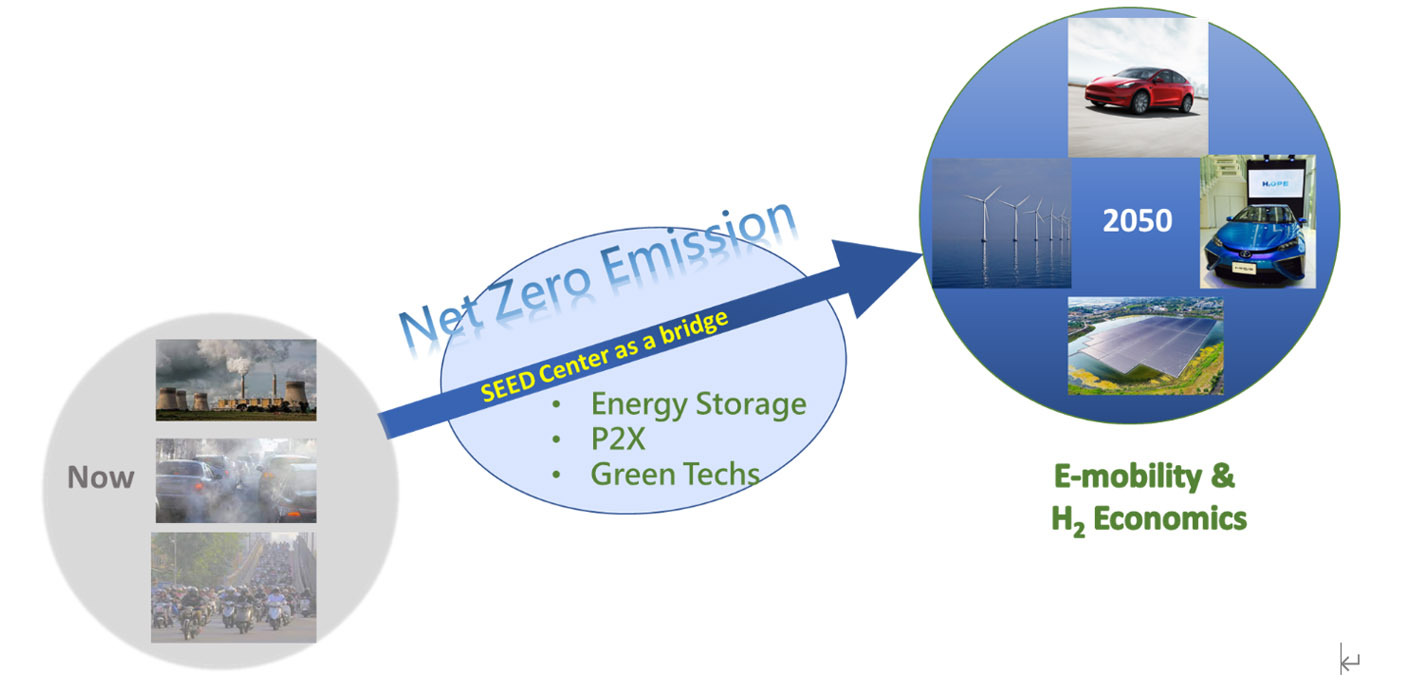
▌Promotion and Goals
Countries around the world are committed to addressing the issues of global warming and energy depletion. In 2022, Taiwan, led by the National Development Council (NDC) in collaboration with the Environmental Protection Administration, the Ministry of Science and Technology (now the National Science and Technology Council), the Ministry of Economic Affairs, the Ministry of Transportation, and the Ministry of the Interior, jointly announced the 2050 Net Zero Emission Pathway Strategy. This strategy outlines five major pathways, four transformational strategies, and two foundations.
According to surveys, it is estimated that under the net-zero scenario, by 2050, the technical transformation in sectors such as construction, transportation, industry, power, and negative carbon technologies will result in an annual growth of 2 ± 0.5% in electricity and electrification. By 2050, the demand for electricity and electrification will exceed 50% of the total energy share, reaching over 400 billion kWh. The total installed capacity of solar and wind energy is expected to surpass 90 GW by 2050, providing 60-70% of the electricity supply. However, this intermittent renewable energy, combined with the base load power, may lead to grid instability, resulting in the scenario of wind and solar power curtailment.
To address this, the development of electrochemical energy technologies, including battery storage and hydrogen conversion, is essential. These technologies not only enhance the resilience of the power grid but also prevent wind and solar curtailment. Additionally, green hydrogen produced can be used for zero-emission fuel cell power generation and industrial hydrogen applications, reducing carbon dioxide emissions.
In terms of battery storage, mature secondary batteries, especially lithium-ion batteries, are favored for their characteristics such as lightweight, high energy density, low self-discharge, and high operating voltage. They are considered one of the most suitable options for electrochemical energy storage development projects.
Apart from developing emerging renewable energy sources, reducing greenhouse gas pollution is crucial. In terms of greenhouse gas emissions, emissions from daily transportation activities contribute to 25% of the total CO2 emissions from all pollution sources. The transportation sector is targeted in the 2050 Net Zero Development Strategy, aiming for full electrification of public transportation by 2030 and the complete replacement of internal combustion engine vehicles with electric vehicles (EVs) by 2040. This transition is intended to reduce fossil fuel consumption and greenhouse gas emissions. The plan also includes the establishment of over 400 electric vehicle charging stations and the promotion of industrial technological upgrades, with comprehensive subsidies for companies undergoing technological transformation.
| However, current EVs still face challenges in safety, range, lifespan, and fast-charging capabilities compared to traditional vehicles. The development of next-generation electrochemical energy technologies for EV applications is crucial to achieving the vision of electrifying transportation vehicles. Electrochemical energy technologies will play a critical role in the net-zero emission pathway, whether stabilizing high shares of renewable energy on the grid, electrifying vehicles, or reducing dependence on fossil fuels through green hydrogen. The core themes of electrochemical energy technology include energy storage batteries and hydrogen conversion technologies. Under these two core themes, the proposed projects include (1) electric vehicle batteries; (2) extreme condition batteries; (3) sustainable energy storage batteries; (4) P2X electrolysis technology; (5) membrane technology; (6) hydrogen applications, among others. |
● With the increasing share of renewable energy and the widespread adoption of electric vehicles, there is a growing and urgent demand in our country for electrochemical energy storage systems.
● Electric Vehicle and Battery Industry Chain
● In addition to the current applications in electric vehicles and frequency regulation assistance, in the future, for tasks such as peak shaving, valley filling, or longer-term power scheduling, a diverse range of electrochemical energy storage systems and technologies will be required
● Hydrogen energy technology has the capability to integrate power, heat, industry, mobility, and more.





